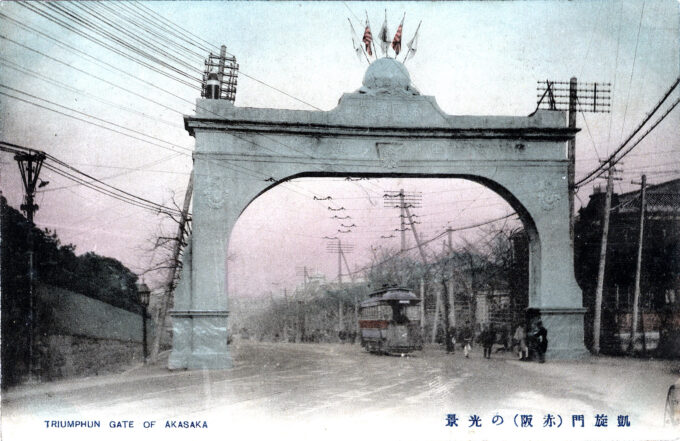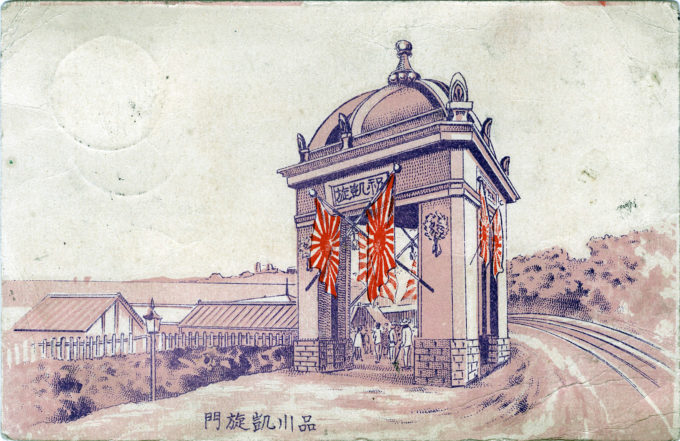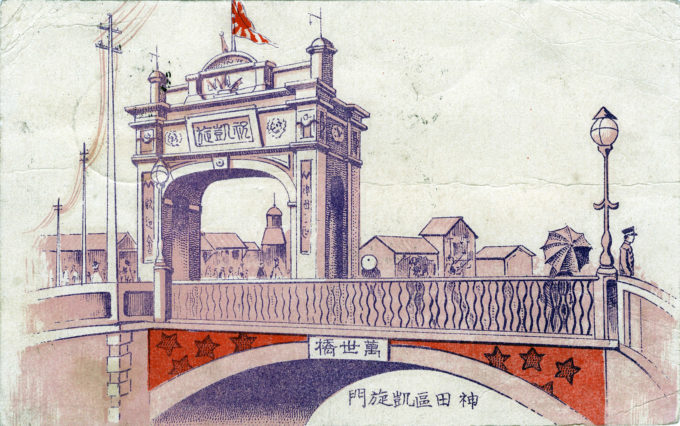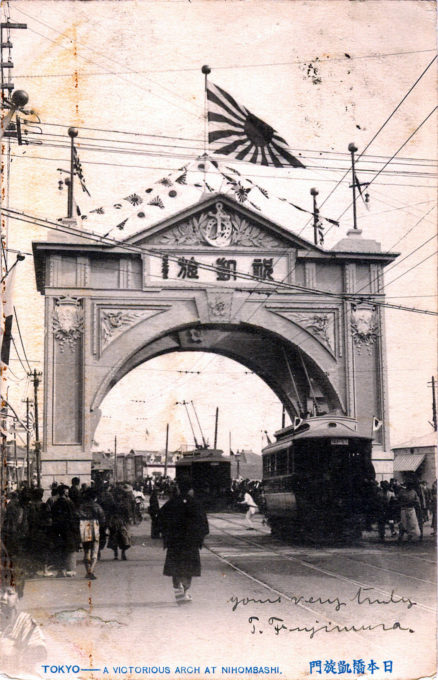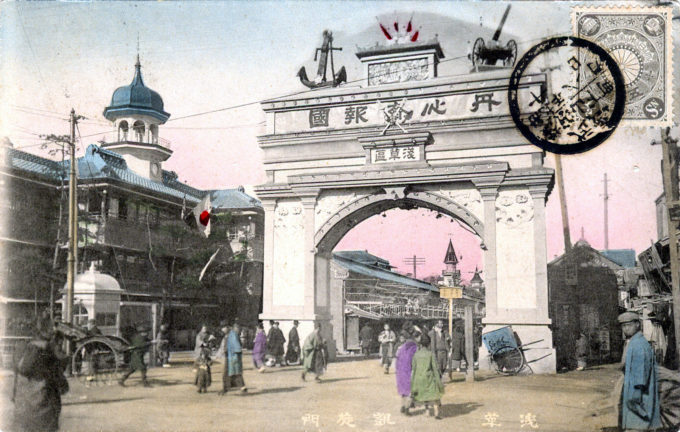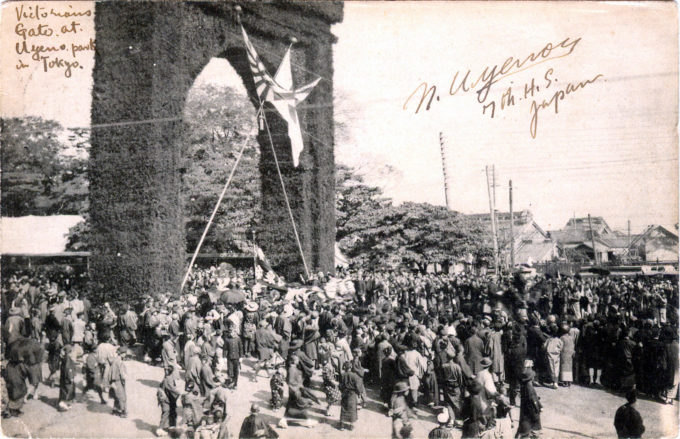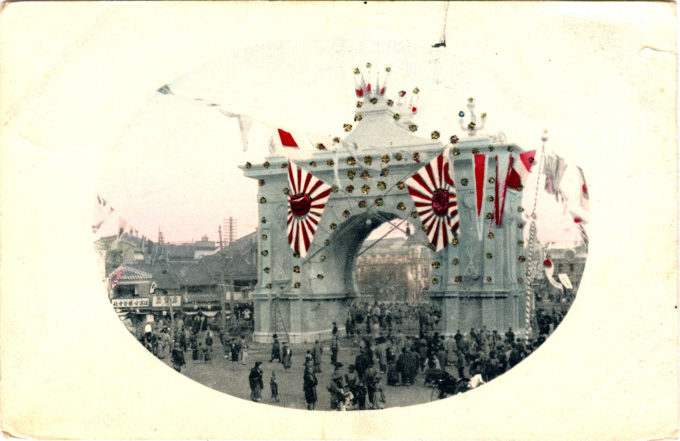
Victory Arch, Shimbashi, c. 1905. Victory over Russia in the Russo-Japanese War was a pinnacle moment for the Meiji government and its modern army and navy, and was marked with many celebrations, grand parades, and the construction of triumphal arches across Japan.
See also:
Russo-Japanese War (1904-1905)
Emperor Meiji at the Grand Fleet Review, 1905.
“Tokyo also became the center of national celebrations for the triumphal returns of military commanders at the head of their armies and naval forces.
“The triumphal entries followed a pattern: the commanders returned to the ritual center of the nation via Shimbashi Station, and then paraded through the city en féte before reporting on their victories to the emperor.
“The peak of such victory celebrations came after the war with Russia, from late 1905 to early 1906. Among these, the greatest of such occasions were the triumphal returns of Admiral Togo Heihachiro, commander of the Combined Fleet, and of the army commanders beginning with that of Field Marshal Oyama Iwao, commander of the Manchurian Army, on 7 December 1905.
“Admiral Togo began his triumphal pilgramage across Japan’s modern ritual landscape by worshipping at Ise Shrine … [His] ulitmate destination was Tokyo; and he arrived at Shimbashi Station in the capital on the twenty-second.
“He then paraded through a city filled with triumphal arches, troops, and huge crowds of schoolchildren and other spectators before finally entering the Palace Plaza through the triumphal arch set up at Sakuradamon … In welcoming the commander of the Combined Fleet, the emperor, for the first time in his reign, wore a naval uniform.”
– Splendid Monarchy: Power and Pageantry in Modern Japan, by Takashi Fujitani, 1998
- Triumphal Arch, Shinagawa, Tokyo, c. 1905.
- Triumphal Arch, Manseibashi, Tokyo, c. 1905.
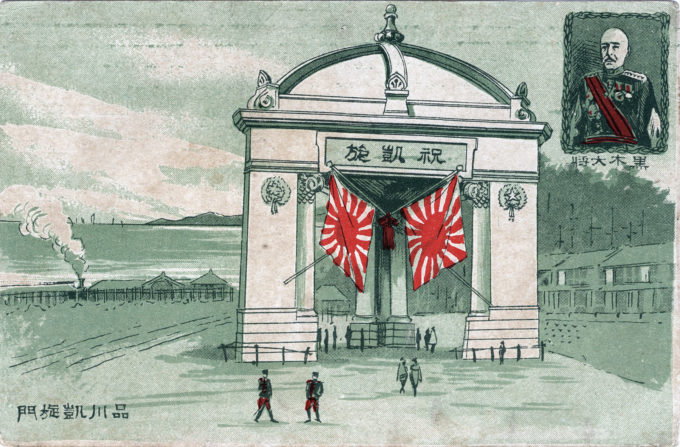
Triumphal arch, Shinagawa, Tokyo, c. 1905, overlooking Tokyo Bay. With an inset drawing of Count Kuroki Tamemoto, an Imperial Army general whose First Army forces were victorious at the Battle of Yalu River, the Battle of Liaoyang, the Battle of Shaho and the Battle of Mukden.
“During a relatively short but bloody land and naval campaign between February 1904 and September 1905, Japanese forces proved victorious, although at a great cost in terms of lives and economic hardship.
“The Russo-Japanese War has been called the first major international conflict of the [twentieth] century. As well as gaining territory, Japan now became one of the great powers.
“… At the height of Western imperialism, Japan’s victory against Russia had a profound effect on nationalists living under colonial rule. In his memoirs the future Indian Prime Minister Jaharwal Nehru recalled his excitement at a rising Asian state defeating a major European power. The Indian Nobel laureate Rabindranath Tagore wrote a Japanese-style poem to celebrate the victory. In the Islamic world Japan was seen as a role model for those seeking independence as well as religious reform and revival.”
– Asian Treasures: Gems of the Written Word, National Library of Australia, 2011
- Victory Arch at Asakusa, Tokyo, c. 1904-1905.
- Victory Arch, Ueno Park, c. 1904-1905.


